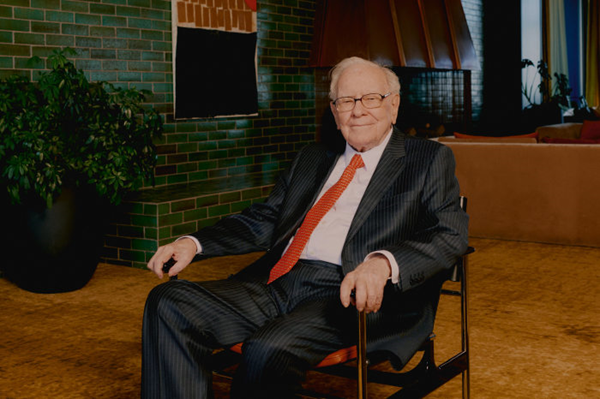Feb. 11, 2025 5:30 am ET
|

Warren
Buffett in Omaha, Neb., last year. Photo: Vincent
Tullo for WSJ
|
The investing secret that helped make Warren
Buffett a multibillionaire isn’t working anymore, though
probably not for the reason you would think.
Every decade or so someone will declare that the Berkshire
Hathaway boss has
lost his touch—usually a cue for the reasonably priced
stocks he prefers to come roaring back. Even so, value investing the
way that Buffett’s mentor Benjamin Graham practiced it and Nobel
Prize-winning economists defined it decades later has had too few
rebounds recently.
The reason isn’t that the “Magnificent
Seven” stocks such as
Nvidia,
Apple and
Tesla have rewritten the law of
gravity. Value investing just needed a tuneup. A slew of
exchange-traded funds, many without “value” in their names, have given
it one.
The classic value factor was described in a
landmark paper by economists Eugene Fama and Kenneth
French in 1992, and it was compelling: A portfolio of stocks that were
cheap relative to their book value trounced flashier stocks to the
tune of thousands of percentage points over the decades.
But the professors’ results covered a period when companies’ value was
mostly in property and machinery rather than brands and intellectual
property. Fifty years ago, less than a fifth of the S&P 500’s assets
were intangible. Today it is well over four-fifths, and many
top-performing companies like Microsoft are
“asset-light.”
The results tell the story: Analysts
at fund manager Lord Abbett point out that a low
price-to-book-based portfolio returned 519% between 2002 and the
middle of last year. One based on free-cash-flow yield did more than
twice as well.
Free cash flow is generally defined as money left over after expenses
and capital expenditures that a company can return to shareholders.
The yield is usually calculated by dividing 12-month free cash flow by
enterprise value—market capitalization plus net borrowings.
“We sort of caught on to this about 10 years ago,” says Sean O’Hara,
president at Pacer ETFs Distributors. Pacer’s U.S. Cash Cows Index
underpins an eponymous ETF, ticker symbol COWZ,
which has about $25 billion in assets. The index has returned 15.7%
annually over five years, a whopping 7 percentage points better than
the Russell 1000 Value Index. It even beat the plain-vanilla Russell
1000 index, dominated by the very much non-value Mag 7 stocks, by 1.4
points a year.
If imitation is the sincerest form of flattery, then the recent
popularity of funds that try to capture similar effects is high praise
for free-cash-flow yield. ETFs launched in 2023 alone include the
tickers FLOW from
Global X, QOWZ from
Invesco,
COWS from Amplify ETFs and VFLO from
VictoryShares.
Value investing was never dead—it just had a measurement problem.
Plenty of investors, including Joel Greenblatt of
“Magic Formula” fame, and even Buffett himself, ignore the
academic straitjacket plaguing some value indexes. Other fund managers
have accounted for the rise of intangible assets by tweaking the
classic book-value calculation, which also improves results. That is
harder to explain, though.
COWZ is simple: Its proprietary index picks the 100 highest
free-cash-flow yielders out of the Russell 1000 stock index and then
weights those 100 by their free cash flow in dollars, capped at 2% of
the index. The fund’s yield at the end of 2024 was 7.32% or 4.7
percentage points more than the overall Russell 1000 index. A small
company version, CALF (get
it?), yielded 9.94%.
Will the strategy work during tough times? S&P Dow Jones Indices has
constructed its
own free-cash-flow-based index based on the S&P 500. It
calculates that the index beat the broad market by the greatest margin
during times of falling economic growth and rising inflation.
With nervousness growing over the Mag 7 stocks, COWZ’s top seven
returners of cash recently—Qualcomm, Gilead
Sciences, Cencora, Tenet
Healthcare, Valero
Energy, Archer-Daniels-Midland and Bristol-Myers
Squibb—might be a sturdier alternative.
Just call them the “Munificent Seven.”
Write to Spencer Jakab at Spencer.Jakab@wsj.com